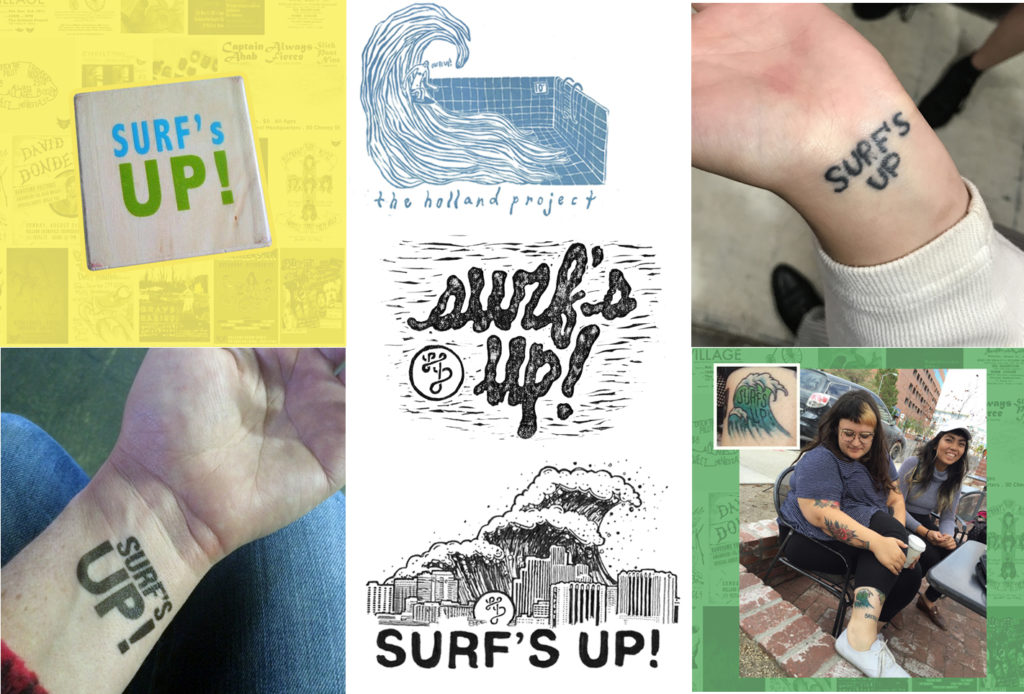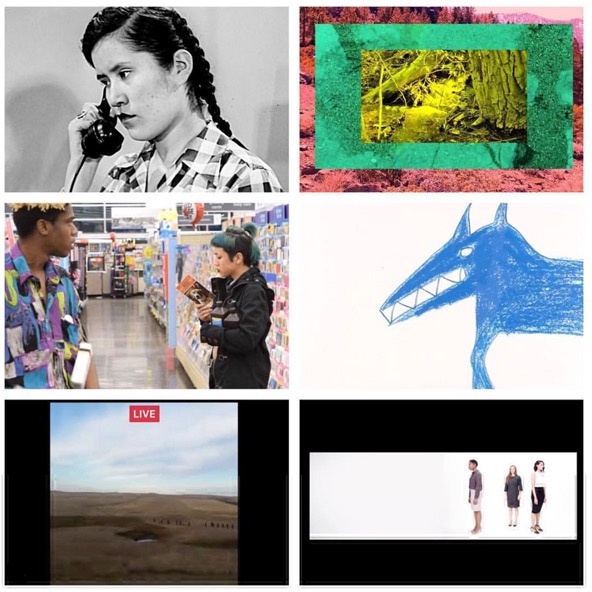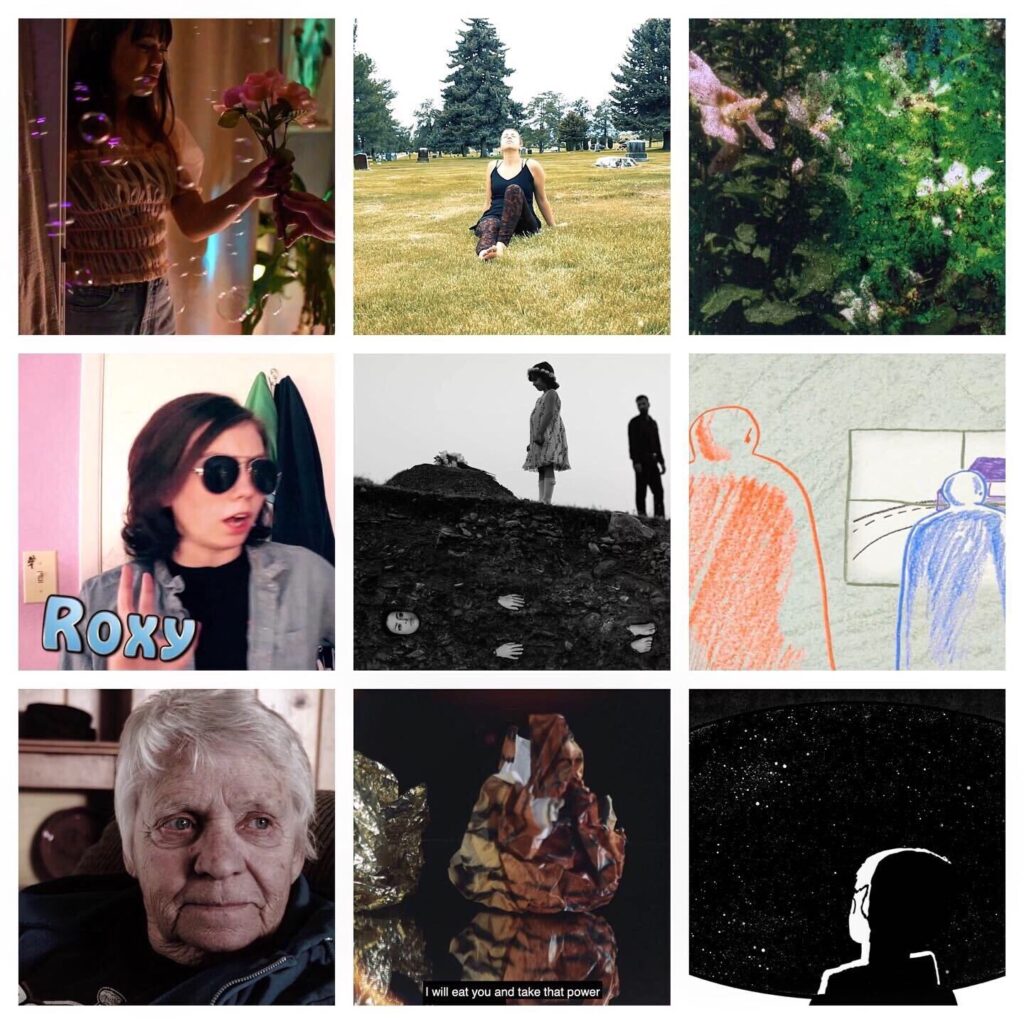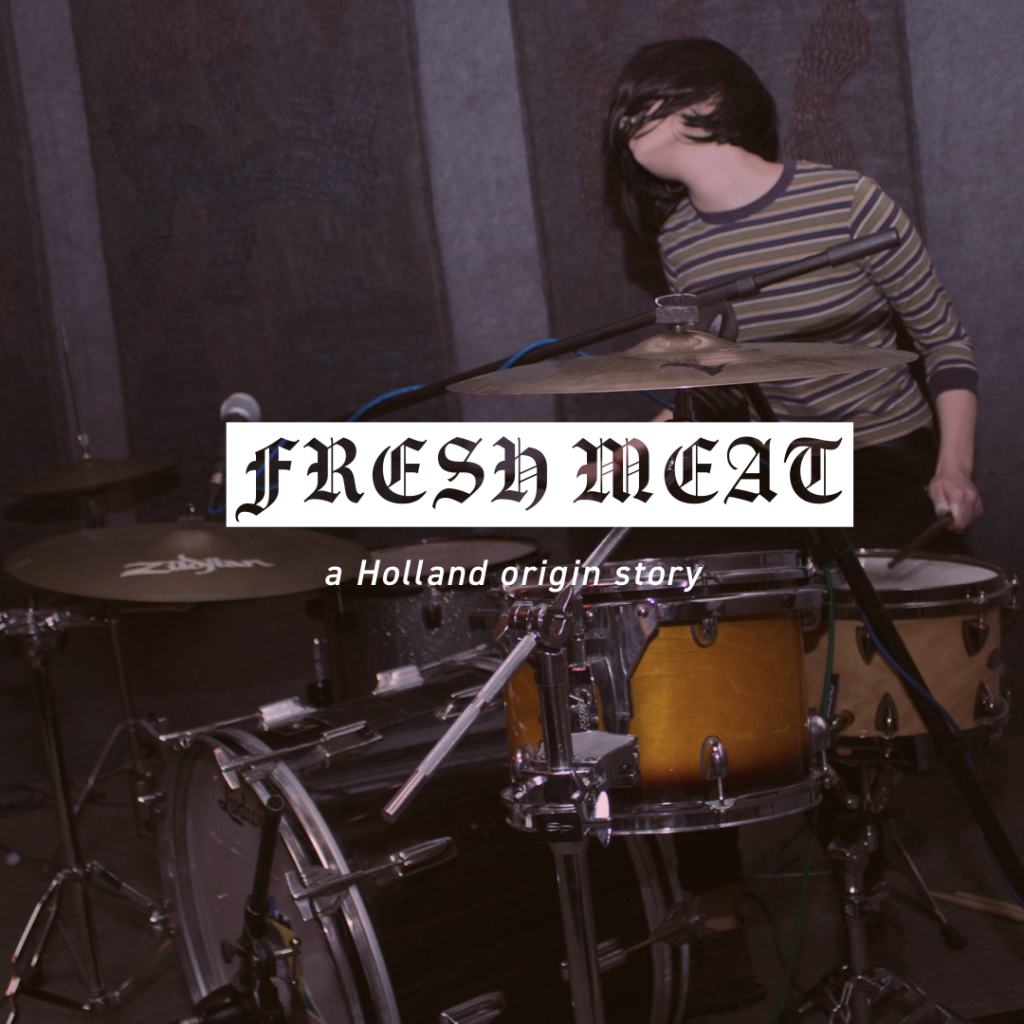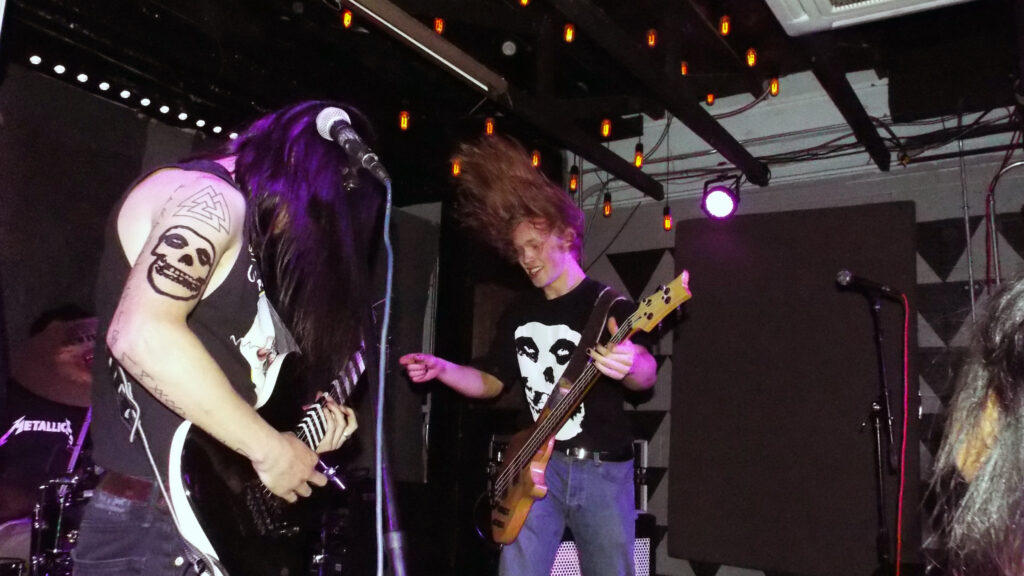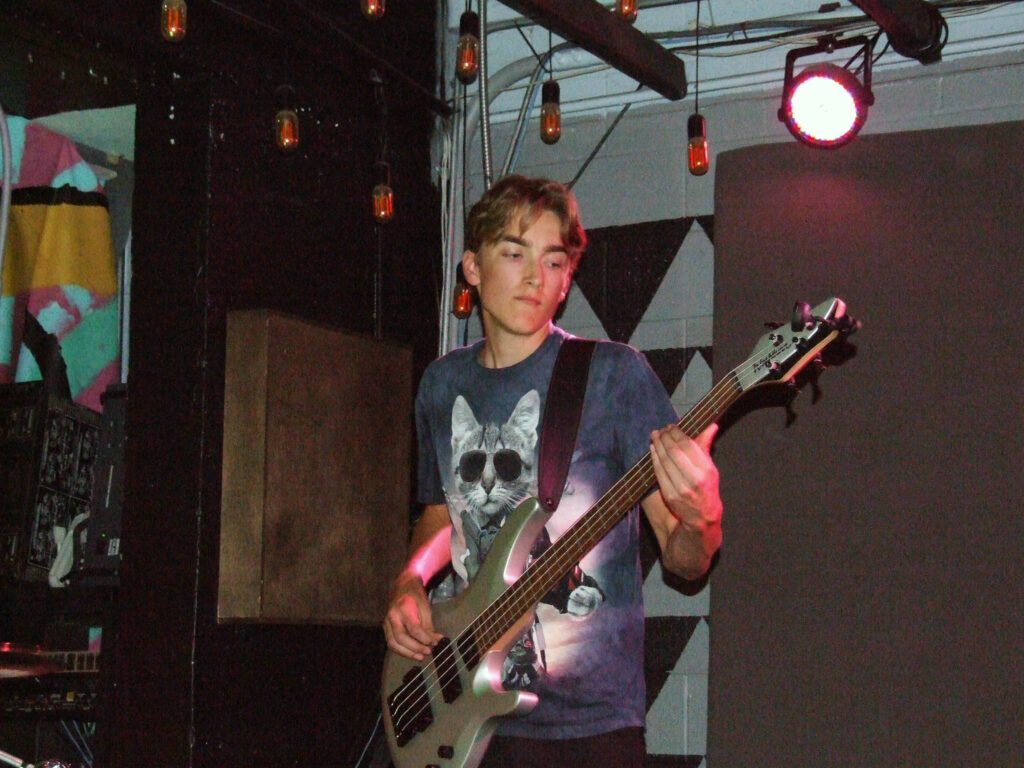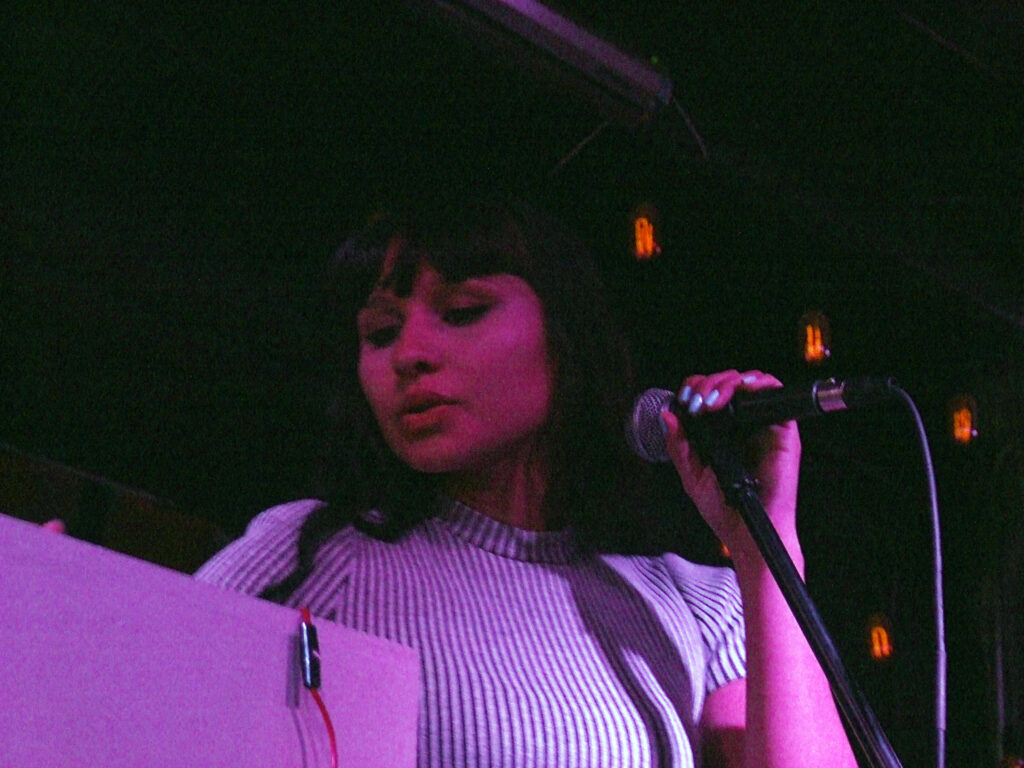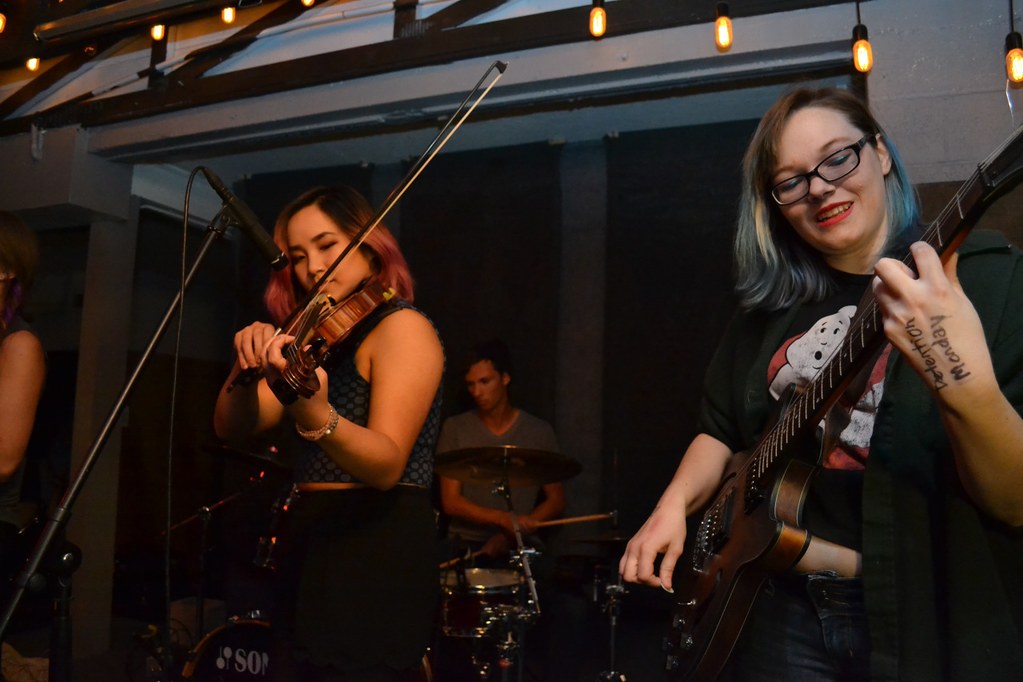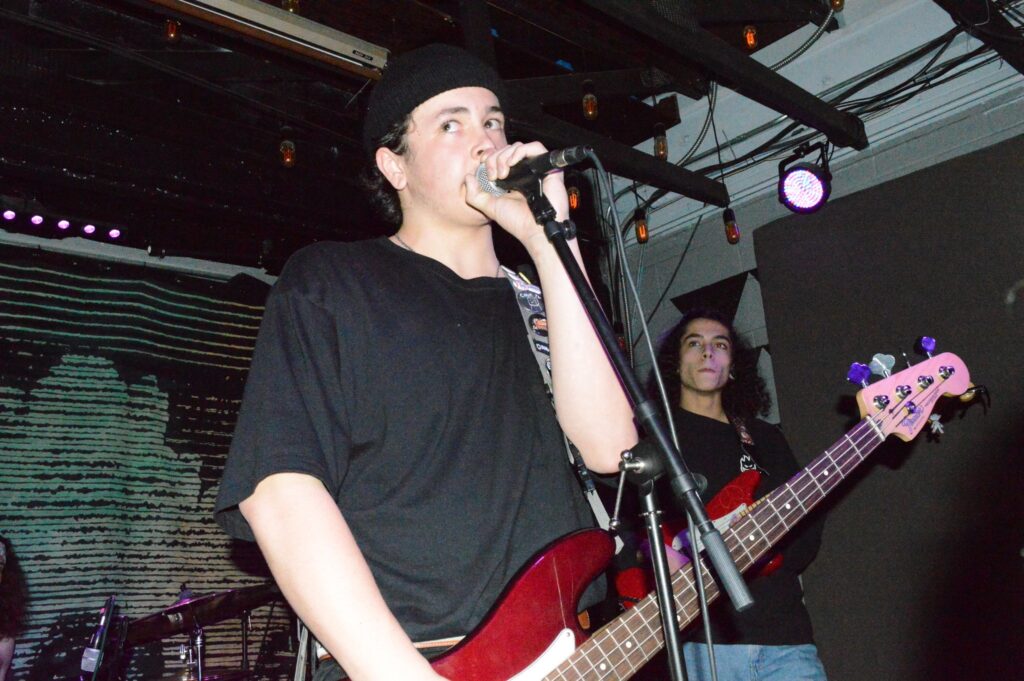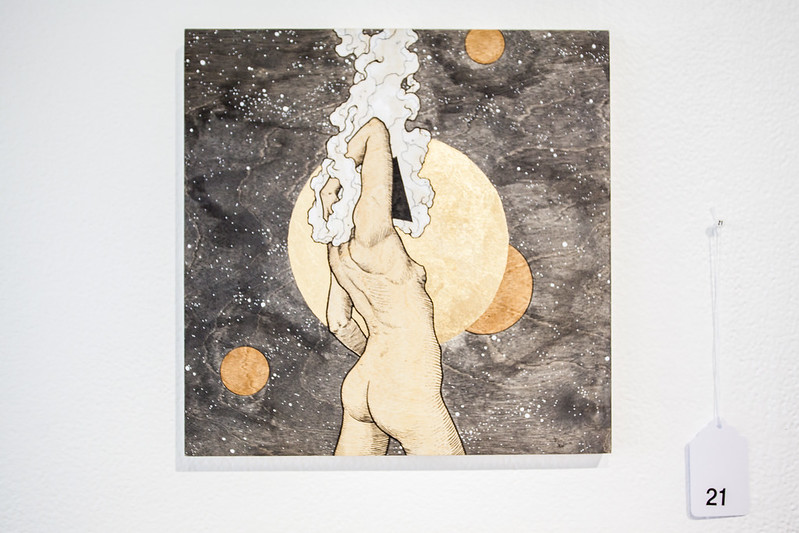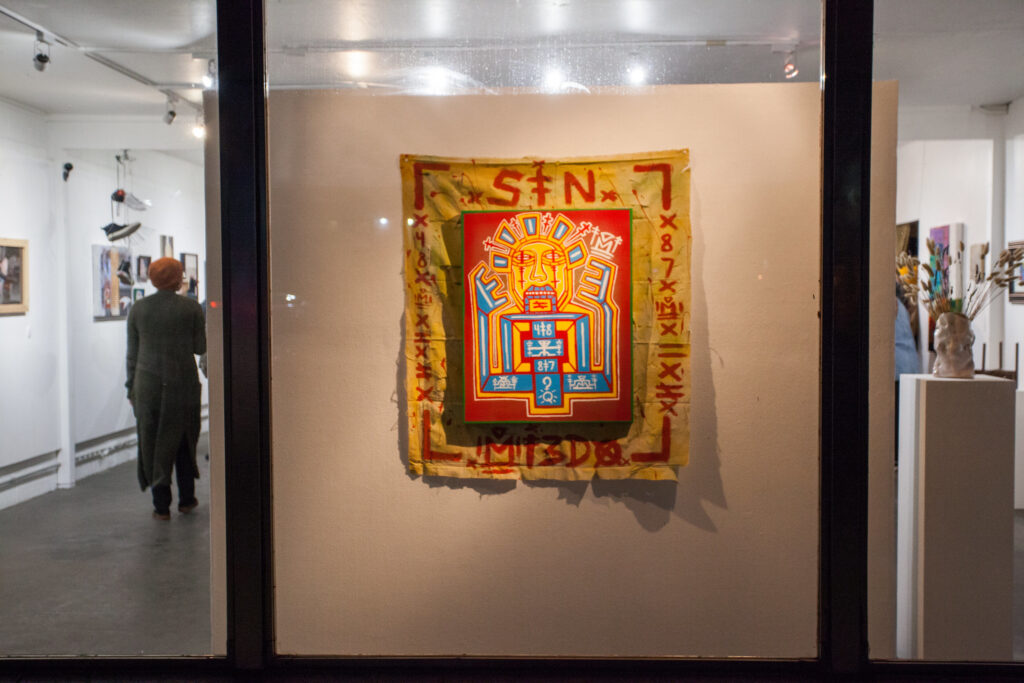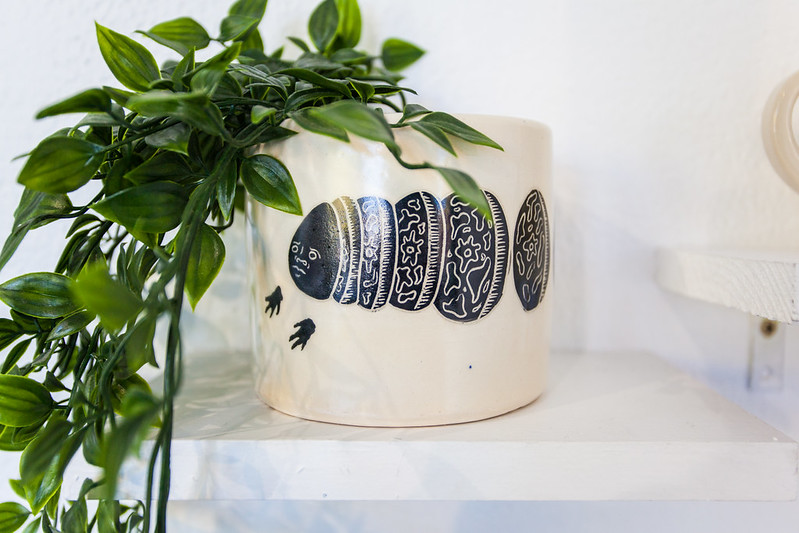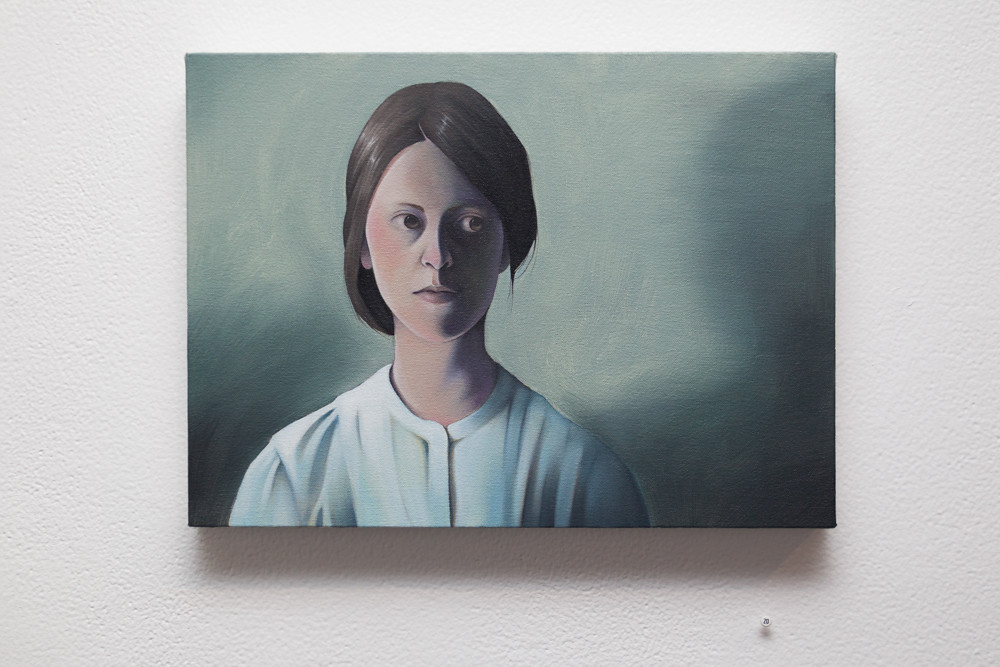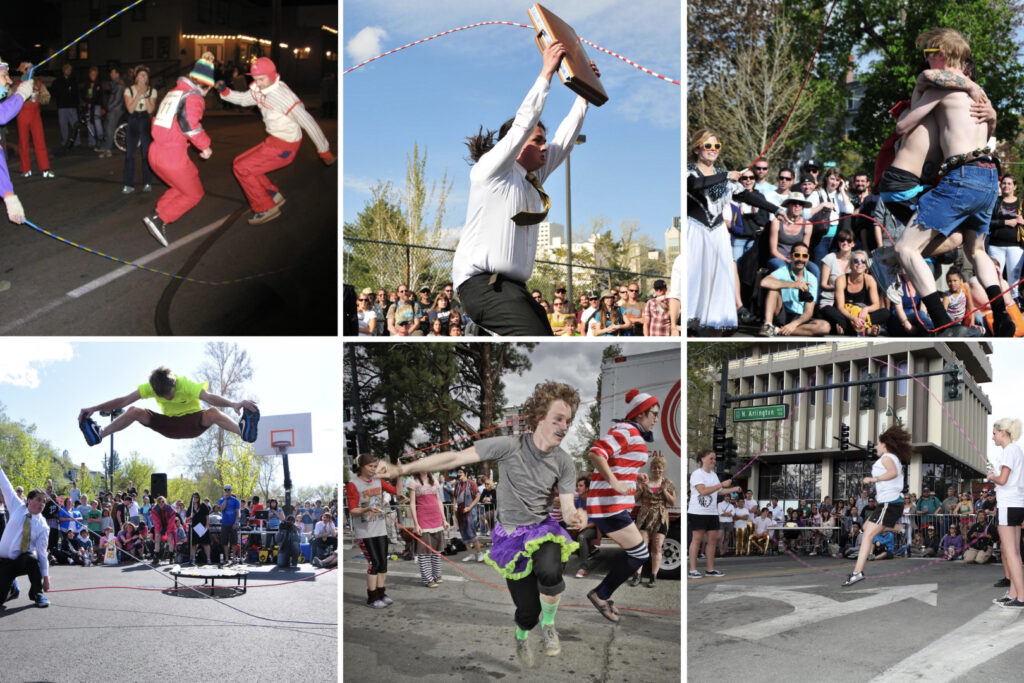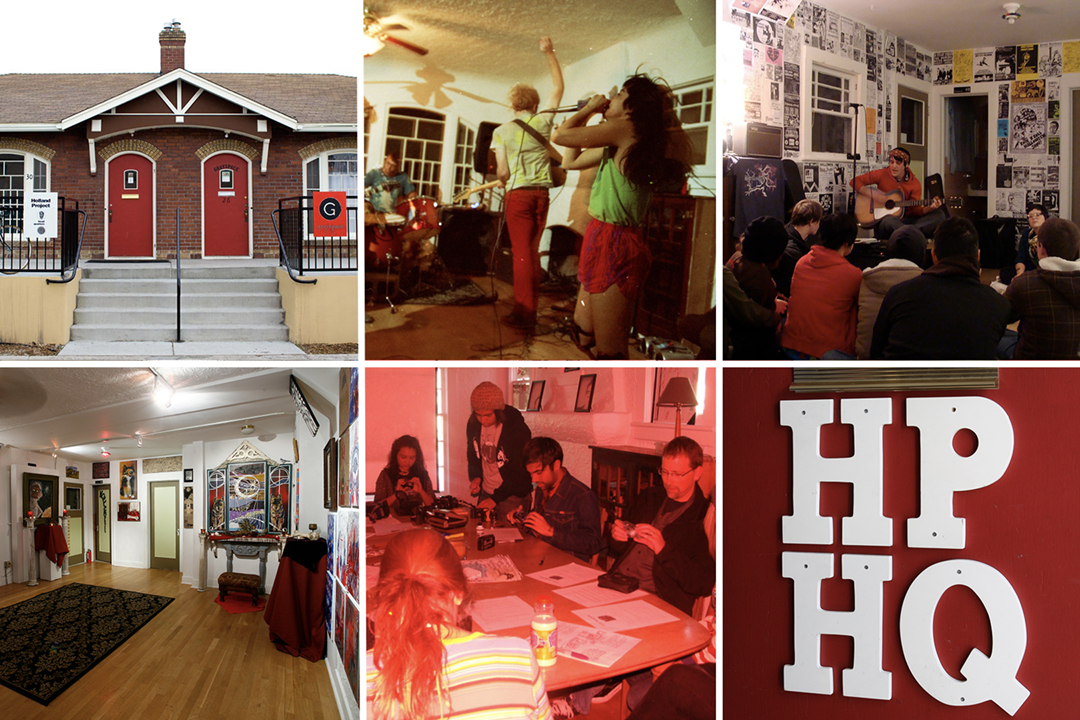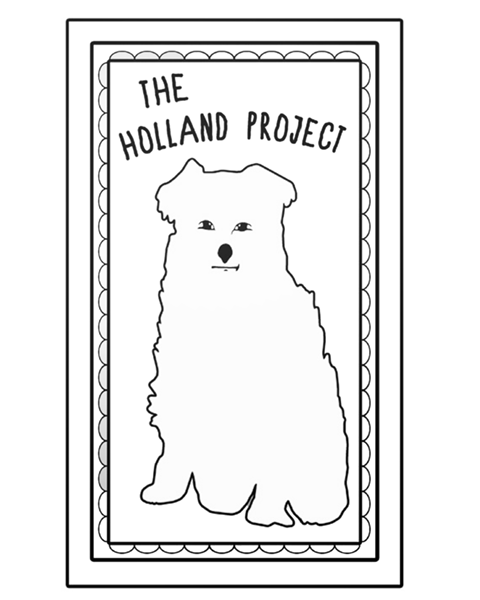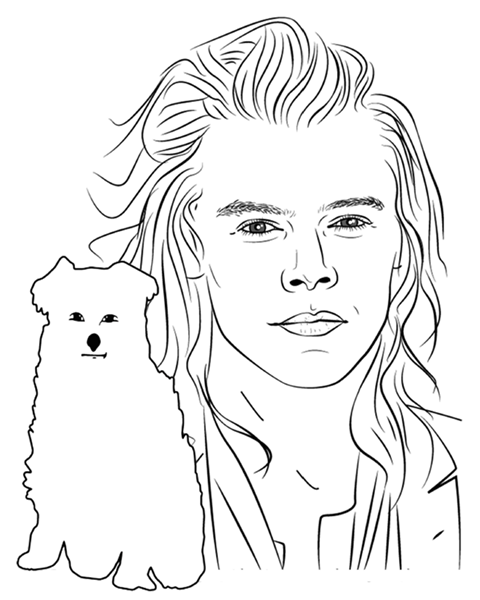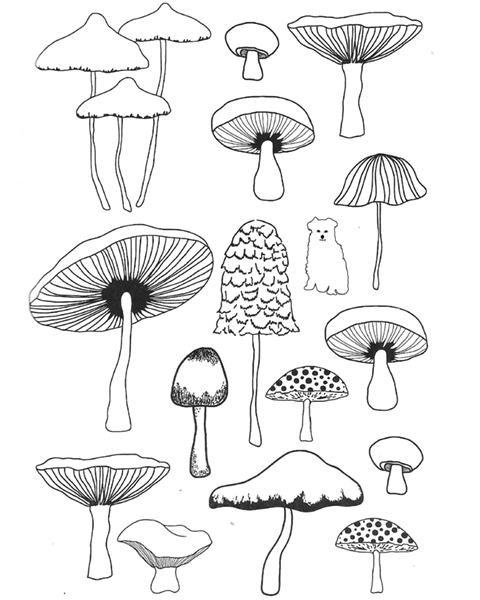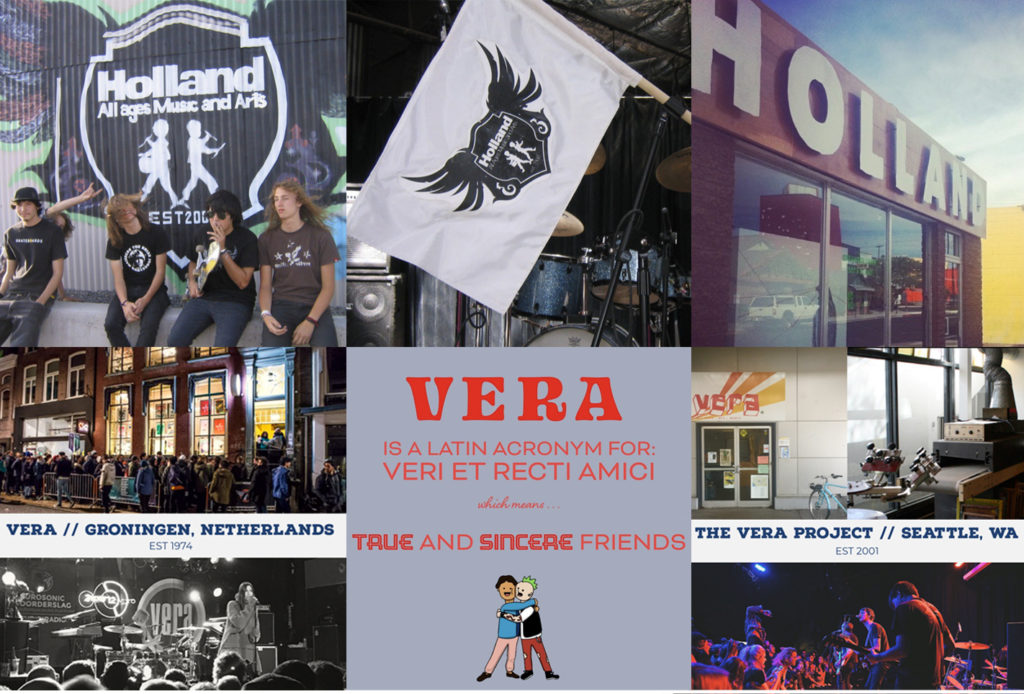From time to time we get asked about certain names, phrases, stories, titles – and sometimes we gotta prove or bust some myths!
KWNK is the first listener powered, volunteer run, member supported community radio station in Reno. Reno had been without a freeform community radio station until KWNK began broadcasting on Halloween 2017. It all started with the Local Community Radio Act of 2010, a bill that cleared the way to open up the air waves for non-profits and other small organizations to start their own low power FM station. Of all the non-profits in Reno, it was Reno Bike Project and their director Noah Silverman that applied for one of these licenses. Noah had gone to school in Washington where diverse community radio stations are plenty, so the opportunity to have that in Reno was exciting.
Noah started working with The Holland Project, who suggested roping in Wolf Pack Radio because they were the closest thing Reno had to a community station plus they had ties to Holland. WPR broadcasted entirely online and had never made the jump to FM radio. So we had our squad. The Reno Bike Project, The Holland Project, Cuddleworks, and Wolf Pack Radio would work to get the station on the air. Holland and Wolf Pack Radio would help provide the content and DJs for the station while the Cuddleworks location on 4th Street would provide a recording space for the project. After debating several different names for the station including KRBP, KBRO, and KMOM, the group settled on the name KWNK and the real work could finally begin. We began an intense fundraising effort to finance the station.
Not only does starting a radio station require a lot of money, but also a vast technical knowledge and we had a deadline. When trying to build a radio station, you’re issued a building permit with a set date that you need to be broadcasting by. If you succeed and meet the deadline, you can finally get your license. KWNK needed help from someone with more radio experience. KJIV 89.1, known as Jive Radio, had been broadcasting in Reno for only a few years before going off the air. Jeff Cotton, director of KJIV, reached out to help KWNK on the technical side and build the antenna. When we finally started broadcasting, we didn’t have enough resources to broadcast 24 hours. So we initially shared the 97.7 frequency with KJIV, broadcasting KWNK shows from 4PM to 4AM and KJIV content during the other 12 hours of the day.
It finally happened. We went on air on Halloween 2017 with 50 DJs, bringing Reno’s first real community radio station to the air. Reno finally had a voice for the underground. The entire project wouldn’t have succeeded if it wasn’t for the Reno Bike Project and the Holland Project. Just a couple months after our initial broadcast date, KWNK moved into our current studio space on Wells along with Laika Press. The station continued to grow through the support of members, rotating casts of DJs, and volunteers. After two years of growing, through several membership pledge drives we finally had enough monthly donor support to purchase our equipment and make it sustainable to broadcast 24 hours a day moving forward. Since we first went on air, over 300 volunteers from our community have made up what you know as KWNK. Help us continue to grow and be a staple in the Reno community by becoming a member at kwnkradio.org for as little as $5 a month!
Modeled after a super fun and accessible film program from the Seattle International Film Festival, the 3-Minute Film Festival is one of Holland’s longest running and favorite programs. The rules have always been simple – make a film, any genre/any topic, shot on whatever you want – fancy camera, go pro, iPhone, whatever – make it 3 minutes or less and turn it in! The first couple years, we screened the films on an old sheet in a back room at West Street Market. We packed the room with folding chairs and milk crates and sat on the floor and watched films that ranged from horror films, to beautifully shot documentaries, silent-style romances, music vids and more. We then leveled up to a legit theater – at the Nevada Museum of Art – and films were shown on a real big screen with real sound and theater seats to boot, all that was missing was the popcorn. These years also saw the addition of amazing partners, our personal favorites – the kids from the Boys and Girls Club, who nailed lego stop motion and claymation narratives that were as surreal and abstract as anything you’d see from a renown Dada artist, and always, without fail, had the best and scariest zombie films. Students from UNR and various high schools submitted films featuring the familiar backdrops of our city; incredible experimental films debuted – playing with light and sound and motion; a killer music video or ski/snowboard/skate video was usually in the mix; and there were always a TON of amazing and original narratives that told full beautiful or absurd or hilarious or tragic stories, all in just a few minutes. Every year we were blown away by the depth, the diversity and range, and the creativity of the submissions. People began to look forward to submissions from their favorite filmmakers year after year – Jesse McCloskey, Kaleb Temple, Em Jiang, Cassidy O’Neal, Tucker Rash, Tosha Palani, to name a few – and were equally excited to check out new voices and perspectives. Let’s not forget the the awards! Each film competed for the coveted Audience Choice Award (as voted on in-person by the audience at the screening), and the Jury Award (as selected in advance by members of the community, Holland, NMA, and KNBP Channel 5) – adding a little friendly competition always ups the energy and the ante. We were sad to take a pause in 2020, but are so thrilled to return 3 Minute in the Fall of 2021. Stay tuned for more details about the festival (they’re coming soon, we promise)! as things are switching up a little bit and some fun surprises are in store. You will have all summer to work on your creations and we cannot wait to see!”
Matt Grimm Reflects “Fresh Meat”
“Fresh Meat initially came out of a lot of conversations I had with friends when I was a teenager about creating an avenue for middle & high school-aged bands to perform in an environment beyond just a high school talent show or battle of the bands. I knew of so many teen-aged friends who had formed bands and wrote original music, but didnt know where/how to get onto a proper stage for a performance at a real venue, and I felt like Holland was the perfect environment for a low-stakes showcase organized by teens, for teens.
After cycling through about 20 different potential names, including New Flesh and Holland High, Fresh Meat was settled on (a fitting counterpart to the Young Blood art showcase), and the first iteration in October 2015 featured the Holland stage debuts of now-longtime Holland friends, including Erin Miller and Em Jiang in their band Who Killed Berd?, Garrett Caufield’s dungeon synth project Svartedauden, and the ever-evolving collective of Arizona Young.
Seeing Fresh Meat grow into an annual event that young people look forward to and plan around has warmed my heart in the 5 years since it started, and seeing all these young bands play Fresh Meat and then get invited back to play shows opening for proper touring acts and even headlining their own shows is exactly what I envisioned for the purpose of Fresh Meat: to give teens a proper platform to perform that I felt was lacking, and to foster a new community of teens who are passionate about DIY and music to continue passing the torch for years to come.”

Nick Larsen reflects on “All-In”
I don’t really remember all of the circumstances surrounding the beginning of All In, though I do remember that, at that time, I had been on the Holland Gallery committee for a few years and was considering joining the Board. All In started as a fundraising idea as part of that transition, and even though I did not end up making the move, it was still an idea that everyone on the board and committee was excited about and that I wanted to see through after the ball got rolling. The very basic premise was that those of us who had benefitted from the existence of Holland’s gallery would donate a piece to the show, and all money raised from artwork sales would go back to the gallery and its operating expenses. In my mind, the show served two purposes: 1) raise funds, and 2) if it could become an annual event, it would also be a snapshot of all of the visual artists who were working in the greater Holland orbit at any given time.
In terms of the structure, I didn’t want to do a silent auction, as I had donated work to enough silent auctions to know that they can be a real bummer. Attendees often wait until the very end to try to snatch up work for cheap, and I remember seeing work I’d donated sell for like $20 and kind of wishing I had just donated that amount of money instead. The “everything is $100” setup allowed artists to know what their work would sell for and to select work that they felt comfortable selling at that price. If it didn’t sell, it went back to them, but no one had to worry that a piece of theirs would be bought for far less than the artist thought it was worth. On the flip side, that setup also gave attendees a very easy art-buying structure to engage with. They knew that for $100 they’d be able to get something, and many artists donated work that would sell for far more than that in a different context. The effect this had was rather than the “wait-and-see” approach that folks often take at silent auctions, it created—from the very first iteration of All In—a situation where people came ready to buy, knowing that if they hesitated on something they were interested in, the person behind them could snatch that artwork’s tag, and that would be that. In subsequent iterations of the show, this led to people lining up outside Holland before the doors opened and buying the majority of the work in the first half-hour of the show.
There is a photo in the Holland archives of a line outside the space, and my dad is maybe third to get in. I remember that iteration of All In the clearest because he showed up early to buy my piece, which is both very sweet and very embarrassing. He told me later he was worried no one would want to buy it, and he didn’t want me to be bummed if that happened. The last few years, I haven’t been able to see the shows because I’m not living in the area, but seeing the work that gets donated on social media, it still seems to be an event that people take really seriously and get super excited about. Always hurts my heart a bit that I can’t be there for it.
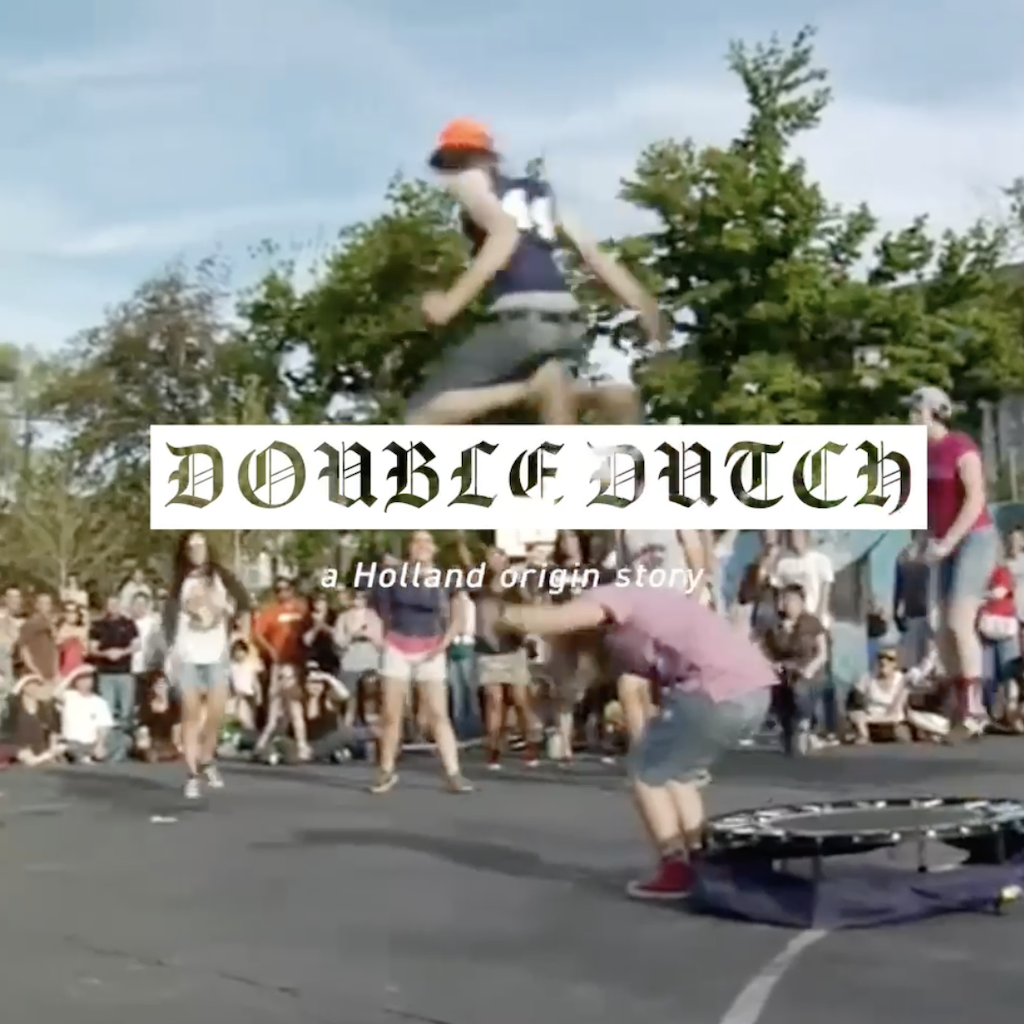
Toni Ortega reflects on Holland’s Double Dutch Battles, the first of which took place this very week in December 2006.
Back in college, Mel Berner and I were pretty excited about the birth of Holland Project. We knew that money was something short of hand as per usual with non-profits so we felt we needed to figure out a fun way of making some cash for a project we felt needed to happen in Reno.
I’m not sure how exactly we came up with starting a Double Dutch battle especially since it was already fall turning into winter that year and COLD, but we did it. The idea was pretty simple -double dutch teams would compete at an event and put on a show for the community in hopes that their support would be given to Holland.
I ended up being the captain of one of the teams. We called ourselves team TIght Ropes and were undefeated for the three years we participated. The members of our team varied a bit by year, some folks moved away, got too busy, etc. but off the top of my head members included at various times: myself, Mel Berner, Princess Ortega, Nick Larsen, Caedron Burchfield, Brandon Shirey, Anthony Alston, Eric Pascual, Danielle Biselli, Meghan Collins, Ciara Clements, and Rob Brown (He didn’t jump. He made our mixes and made sure our beats per minute were on point with each jumper) I don’t think I’m forgetting anyone but my apologies to anyone I may have forgotten.
Our team colors were teal, pink, white, and purple. We were pretty serious about weekly practice and upping our game every year with additional tricks (think acrobatics and speed jumping), dance routines, chants, our own flag, and one year we made stickers that read, “Tight Ropes crushing every team’s high hopes!” Admittedly, we were kind of the “bullies” of the double dutch battle scene, but it made for all the teams to really get serious about it, even though it was just for fun. We wanted it to be a real competition. However, I do remember that once during training time before the actual battle, I got into my Volvo to find that someone from another team anonymously left a note on my windshield. They wanted to let me know that their team was ready and going to win. I never figured out who it was, but it was all in good fun and just made us practice harder. The practice paid off too because we never lost a battle.
I still jump rope from time to time, but it’s hard to get enough people to double dutch. It was a great three years and even cooler than it lasted much longer than that afterward. Some memorabilia I still have somewhere in the archives of my storage our the first year Holland Double Dutch battle T-shirt, my team Tight Ropes t-shirt, and the trophy from what I think was our last year competing.
I have no idea where my ropes went, maybe they retired and went somewhere south. It was a good time and we were pretty good too.
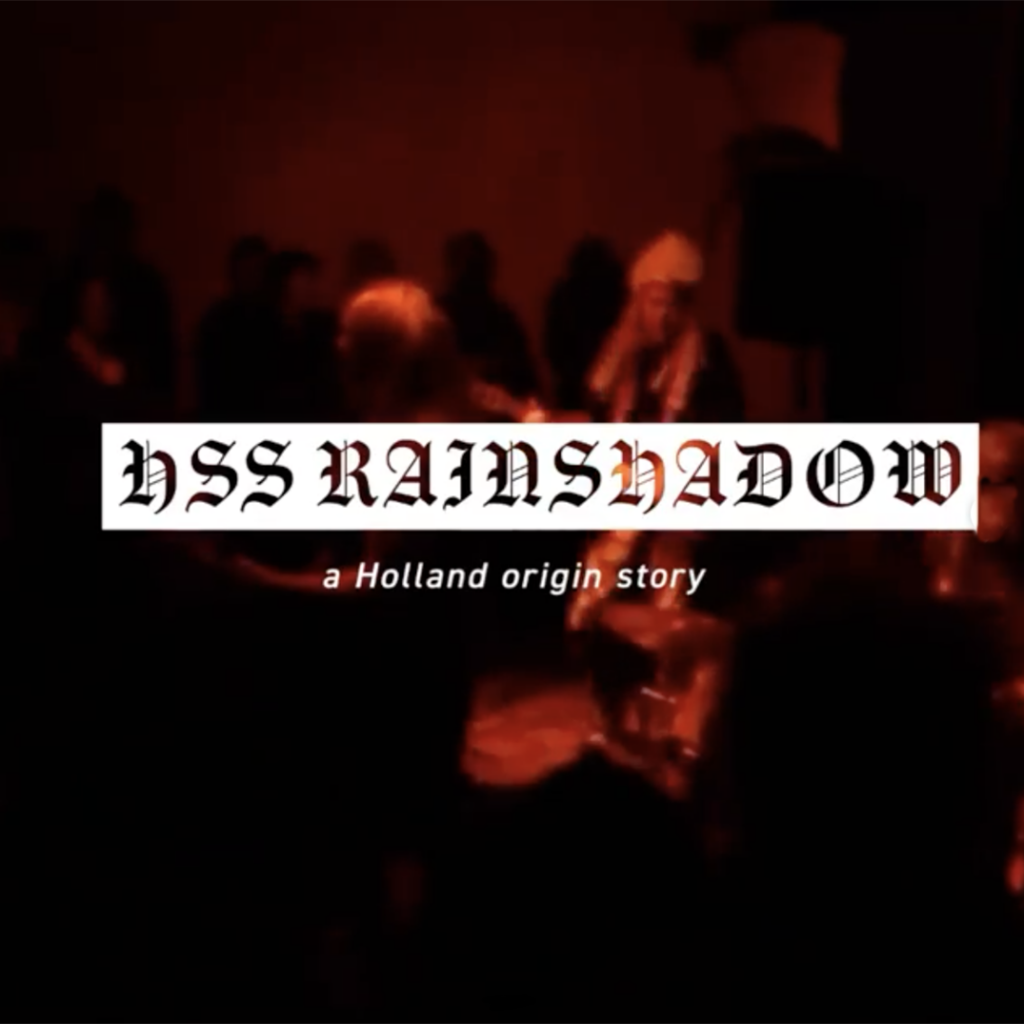
HSS Rainshadow (aka Holland Show Space at Rainshadow, or just Rainshadow), was a high school by day in a former Italian restaurant/bar whose owners disappeared over night. The space was surreal – the remnants of the Italian restaurant remained (purple and green paint, giant furniture, big commercial kitchen, and a bar area that the high school had little use for). Joe Ferguson (Holland cofounder and Rainshadow teacher) was able to convince the principal to let us throw shows in the bar area after hours. It many ways, this was a major turning point for Holland.
Though it wasn’t our space (and you could feel that a bit when there), it allowed Holland to level up IMMEDIATELY and produce big shows. The space was also perfect for Holland at the time, when there was a microscope on us in terms of safety, code compliance, and just suspicion about young people gathering in general. The building was accessible, up to code, had parking, heat/ac, power, proper exiting, bathrooms, etc. It was turn key, which enabled us to focus on the cool stuff – bringing cool bands to Reno, especially those that were far too big for the HPHQ. The school let us build a stage and sound booth, Omar Pierce and Nick Larsen devised a backdrop that could appear and disappear when it was time for school again, and we dubbed Julian Jacobs “Chairman of the Chairs” due to the fact that we had to move like 100 heavy bar stools and tables before and after each show.
Like we said, it was a game changer. This is where we got to host bands like Iron Lung, Ty Segall, Shannon and the Clams, Grass Widow, The Babies, David Dondero, Rocky Votolato for the first time (as well as a slew of international artists!); we were able to play with space and do cool site-specific dance events; we hosted Cowboy Poets vs Slam Poets one day for fun; it’s where Rogue (now High Desert Art+Craft) was born; and the Halloween Show THRIVED – some of our favorite memories are from the Halloween Shows at Rainshadow (Mangles! Megan Boldway as Lady Gaga, Crush as Violent Femmes, and performances from Talking Heads, Sam Cooke, Pat Benatar and so many more!). For many of us, an absolute highlight was Chain and the Gang – a show that has stuck with everyone who was there for its pure magic – with Royal Noble dropping rose petals from the catwalk up above during their set, to Ian Svenonius’ white suit and iconic presence just nailing it in a rare and perfect live music moment.
And let’s not forget, it’s loading out of Rainshadow one night that we saw the For Rent sign across the street, a former mattress shop was vacant. Rainshadow led us home – 140 Vesta Street (that former mattress shop) would become Holland, truly Holland – our place and the first venue to house ALL aspects of our organization since Keystone – an opportunity we might have missed if we weren’t right across the street at just the right moment.
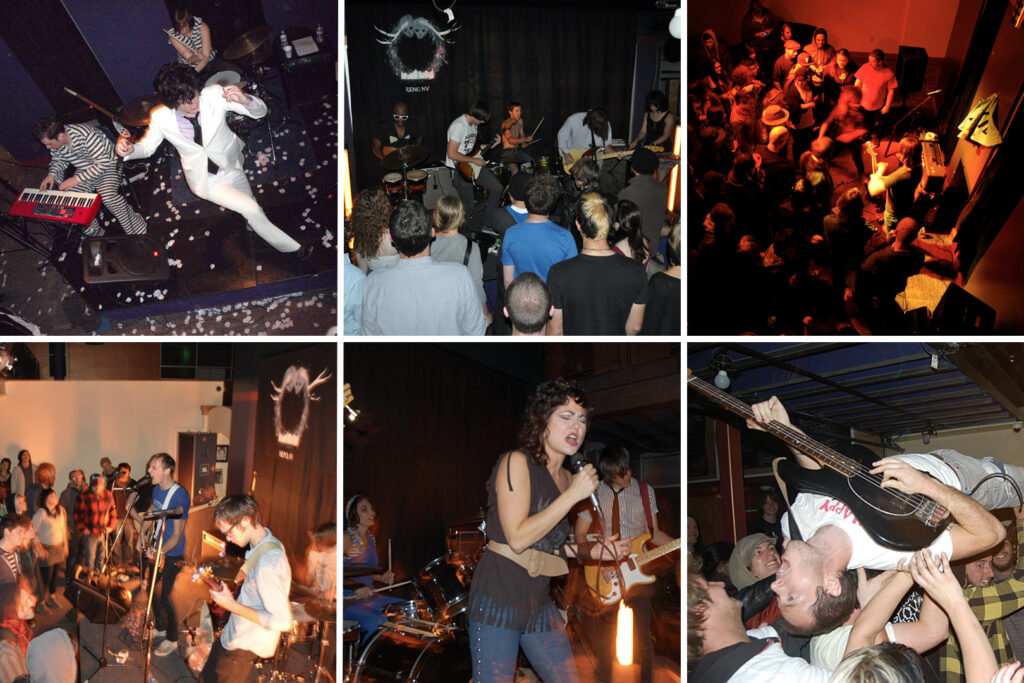
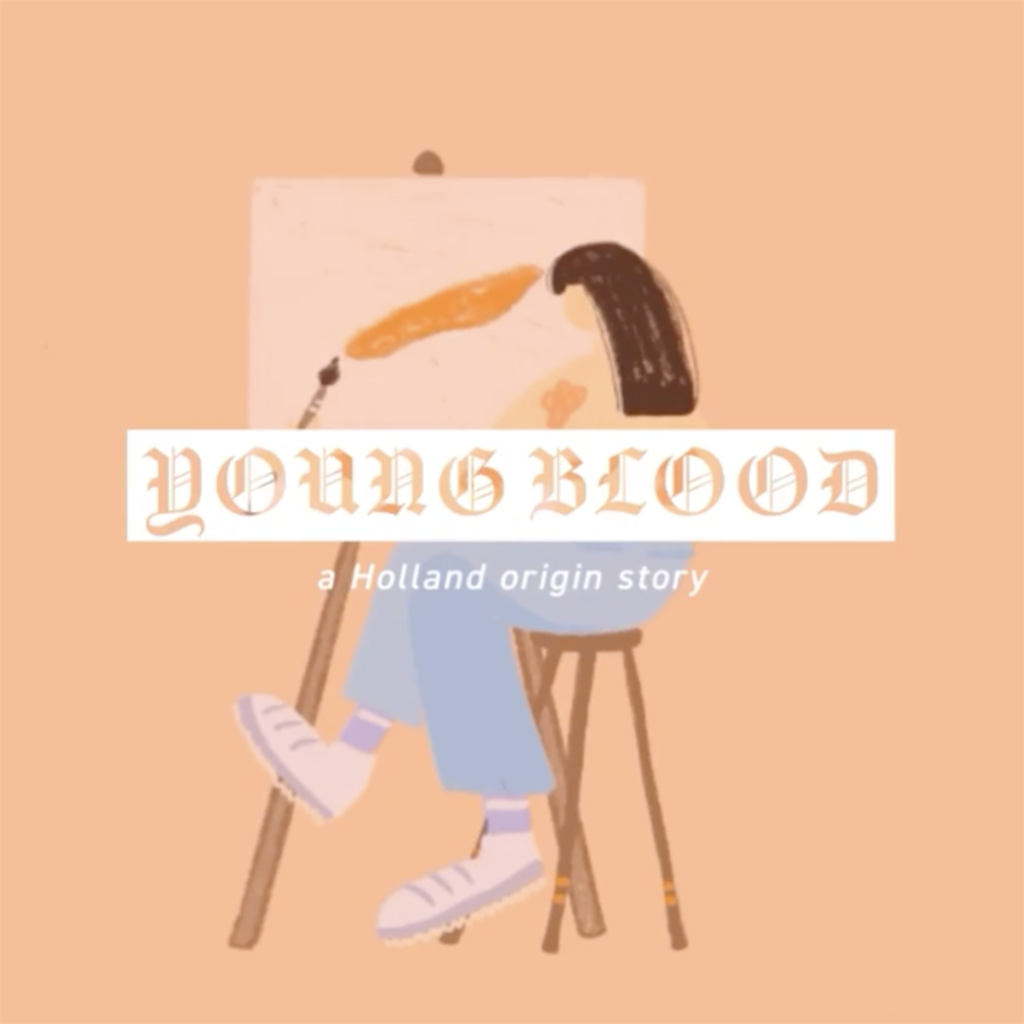
Young Blood launched in Jan. 2013 as a low-stakes and fun way to celebrate and showcase some of our community’s youngest and best new artists with a peek into their worlds, their works in progress – the stuff made at home or at school, techniques and styles being explored. As a one-night only, unjuried, no proposal process event – Young Blood created an easy forum for young artists not just to make work, but to learn how to hang and display it, how to title, price and sell it (or not!) – a sneak peek into a professional arts sphere. Working hand-in-hand with members of Holland’s Gallery Committee, students put together a pop-up art show in a day. It took off immediately – packing the Gallery with artists and their friends and families from all over the city.
Young Blood at its core is a party – it’s young artists coming together from different schools and neighborhoods, it’s an appreciation of people honing their craft, a showcase of their skills, a networking and friendship-building experience, an entry point to Holland and our greater arts community, and a high energy gathering to honor art and art-making in a world where these skills can take a back seat to sports, theater or debate-like activities.
Over the years Young Blood has become very near and dear to our hearts at Holland and it’s one we always look forward to. We feel so honored and privileged to have met so many amazingly talented young artists and friends because of Young Blood and have had the special opportunity to watch them and their work grow and flourish. It’s wild looking back in the archives and seeing all the close friends we’ve made who’s first gallery showing was at Young Blood and who continued to stay involved and have become part of the bigger Holland family. Artists like Em Jiang, Summer Orr, Paige Gomez, Adam Benedict, Bridget Conway, Hanna Kaplan, Erin Miller, Marjorie Williams, Maya Claiborne, Ana McKay, Dave Hall, Kat Neil and soo soooo many more (too many to name here!) who continue to inspire us every day and make us so proud to have been a small part of their artistic journey. It’s youth-driven artists like this and programs like Young Blood that keep the HP gallery fires burning and make us feel excited and hopeful for the greater arts community and the next generation of local artists who will lead it.
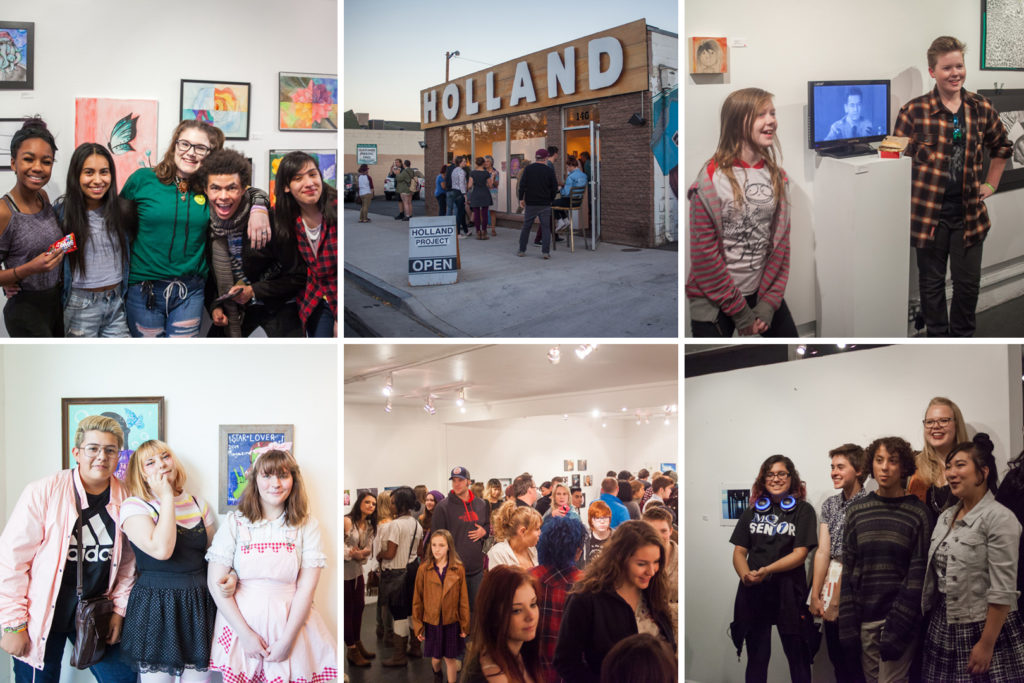
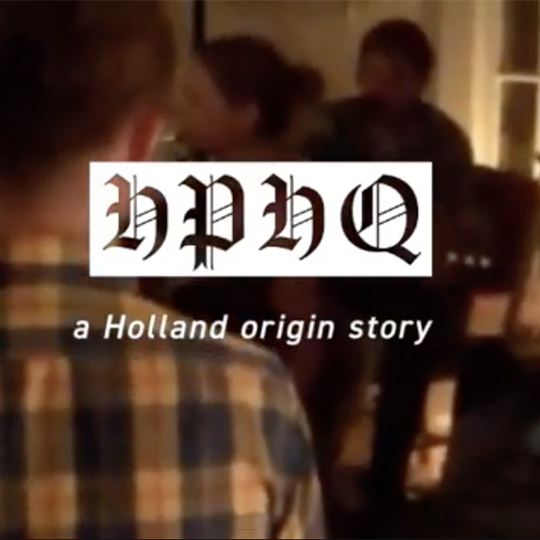
The HPHQ was our landing pad after the closure of Keystone Avenue. It was located at 30 Cheney Street and was about the size of a living room – small and cozy with a fireplace and a bright red door. This was pre-Midtown insanity – the street was quiet, there weren’t coffee shops or other businesses around us yet, it felt like a safe haven after the heartbreak and disorientation of leaving Keystone. At first, there was a great gallery – Grayspace – that shared the other half of the building (and was how we came to find the space in the first place) – the layout was a mirror to ours. Later the Obama Campaign would be our neighbor for a few months, then Bootleg Courier, and then Neverender for a time. On the other side, the Hub launched out of the tiny garage space. Now the building has become home to Death and Taxes and Cheney Street is Midtown Central.
While the space was smaller and had constraints, the HPHQ held its own. When we couldn’t do amplified shows, Ty Williams launched Punk Rock Storytellers (a series of unplugged shows where typically loud bands played quieter sets, telling stories about their music in-between songs) – still among Holland’s most favorite memories; Anthony Alston rebuilt the gallery program in the pint-sized space and soon it was home to BFA exhibitions, cool installations and even the first Stranger Show (packing the tiny space with 100 people or more, spilling out into the street); workshops thrived in that environment; and it was where we launched Holland’s summer event series (Localmotion, Forage, etc). It was also home to a BUNCH of unforgettable and killer shows – both quiet and intimate and high energy, shaking the space (and sometimes the framed artwork or goods on the walls next door).
In another favorite memory, Van Pham and Clint Neuerburg covered the entire space in vintage Reno show fliers for Paper Thin – an incredible visual testament to Reno’s music history. There was also a time when the space was covered in “secrets” hanging from fishing line from the ceiling – all secret messages written on scraps of paper from people in our community – some funny, some sad, and of course, some love notes.
We knew it wasn’t a forever space, but it was a lifesaver at the time – a place to regroup, a place to be resourceful and creative, to continue with programming, and most importantly, a place to gather.
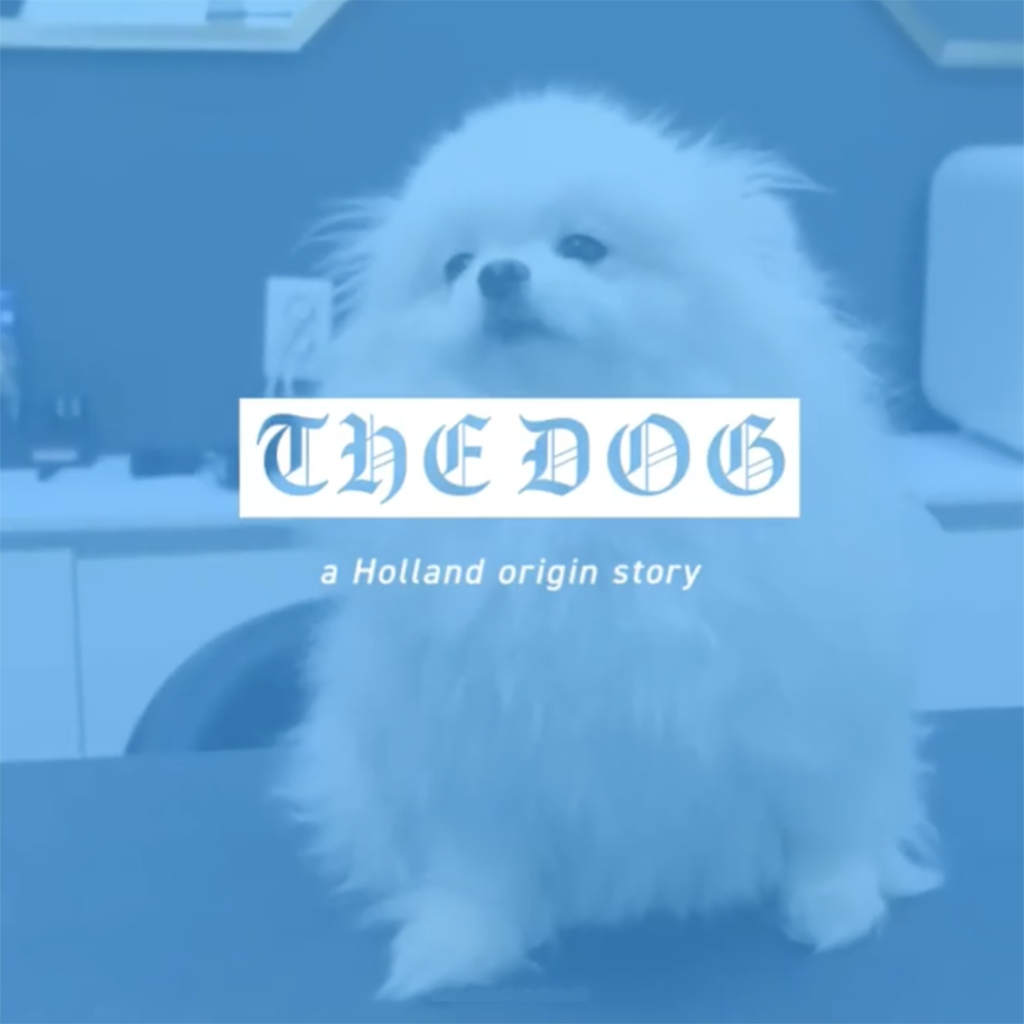
Is their name Mitzi? Or was that added by sneaky vandal recently? Could it be Ralph? Who is the artist “BFR”? While some parts of this story we simply will never know, we can shine a little light on how THE DOG became a Holland Project icon.
The painting was first discovered in 2014 by artists Kelci McIntosh and Alana Berglund who at the time were making daily trips to Goodwill Bins. It was love at first sight – resulting in an immediate photoshoot on 4th street (shown above) and a new place in the Warehome. While it seemed like the dog was now in its forever home, it was not long after that Kelci submitted the painting to the found art show “Finders Keepers” for the Holland Project Micro Gallery. Long story short, the dog was never claimed after the exhibition and by default became a new addition to Holland’s permanent collection.
He sat in the library keeping a watchful eye over everything and meeting many bands as they used the space for a green room. When bands played Holland multiple times over the years, he was a constant – a friendly familiar face welcoming them back to Reno. As artists began to greet him warmly, pulling him off the organ to sit with him between sets, snapping pics with him and whatnot – he became a Holland mascot. In 2015, the dog’s fiercest lovers – La Luz – brought him out to hang out on stage and later sent him crowd surfing. In 2017, he became the patron saint of Holland during our 10 Year Anniversary Party – sitting smack dab in the middle of our altar for all to worship and respect. The dog is now one of Holland’s most recognizable features, as he continues to humbly guard our space and be a welcoming face for all who come. We have no doubt he misses all of you, and can’t wait to see you soon.
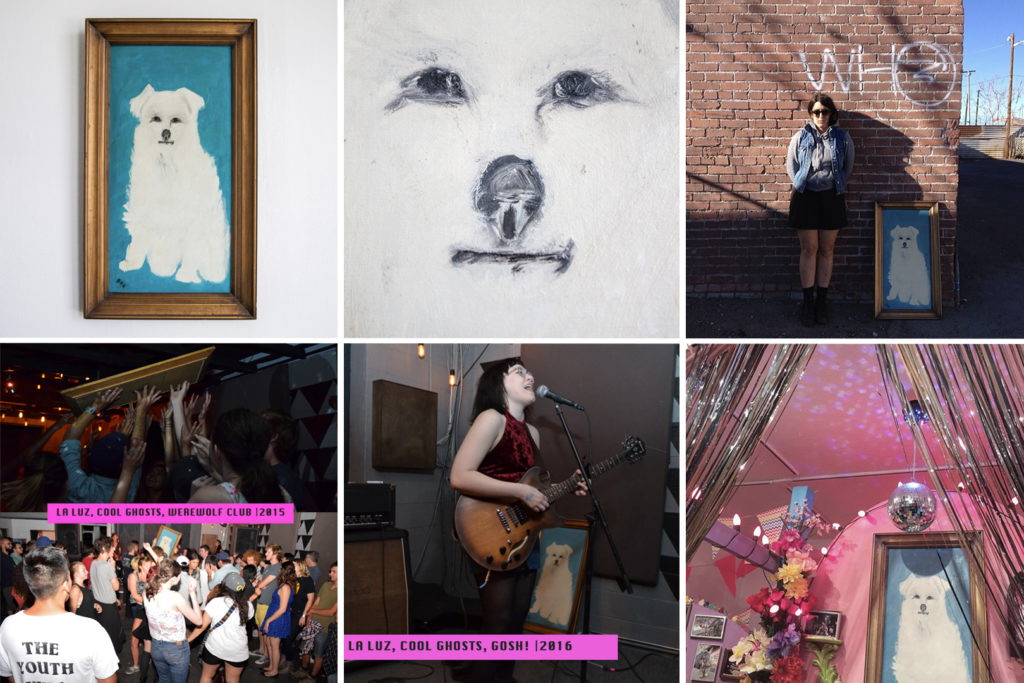
In honor of this HP origin story over, we bring you the HOLLAND DOG COLORING BOOK! As we know, dogs are immune to COVID, so he’s been taking time during Holland’s closure to live his best life – riding monster trucks, camping, learning about mushrooms, and meeting lots of new friends! We also included a page if you want to cut him out and drop him in to any new adventures – he loves that! Download, Print, Color Away!
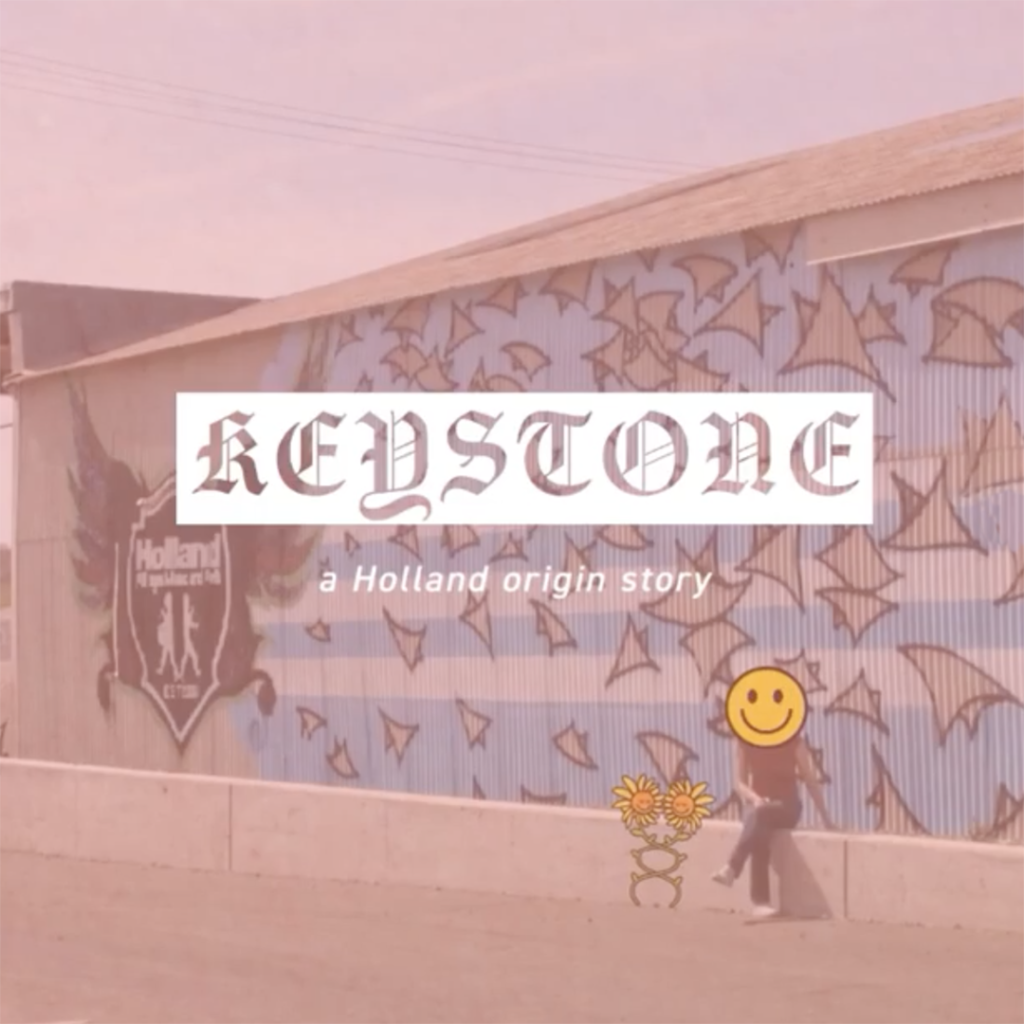
Keystone Avenue was Holland’s first venue – a big warehouse space next to the train trench that had no real walls (just corrugated metal), no heat or ac, birds nesting in the rafters, and a slew of left behind construction materials in the front. The zone also had some history – the building next to it used to be an indoor skate park called Stoney’s and used to have shows as well back in the day. We loved it.
After hosting a Double Dutch Battle to raise $6k to insure the space, the City of Reno handed over the keys. We spent a very cold beginning of 2007 building out the space – Austin Baker built a gallery as part of his BFA show at UNR, Clint Neuerburg provided us all the soundproofing materials he could take from his job at Wild Oats at the time, we took old cardboard newspaper rolls from the dump to line the metal walls, Angie Watson lead an effort to outfit the library, Mel Berner and Jen Graham took on a bathroom as an art project, Tim Lamaire donated our ginormous stage, Shane Forster and others pieced together a sound system, Erik Burke painted a mural on the side along side some kids from Rainshadow Charter School.
With lots of help, the space officially opened in April of that year – and then in a snap – the trouble started. After a handful of shows – a complaining neighbor and fire code issues (namely, no sprinkler system) brought closure to the space in a blink of an eye. We had no money to invest in sprinklers or to fix the code issues, and were too young/new to take on such a huge endeavor ourselves and to fight with a neighbor that didn’t want us next door. Because the building was all metal, it sorta became it’s own speaker – no matter how quiet a show was, sound amplified through the walls and roof. We held on for a while, but in late summer of that year, we closed the space.
Despite the brief time, it’s a space that’s emblazoned in our hearts and minds. Countless people worked endlessly to transform the space, some very magical shows took place there (like an unforgettable performance from Seattle’s Degenerate Art Ensemble that was forced to go unplugged in the 11th hour after a stand-off with the neighbor; the show where everyone got on the stage because it was so big; a very cold show where a 16 y/o Clark introduced himself to us by telling us he was going to haunt the space if he died from freezing; a beautiful evening of site-specific performance curated by Cari Cunningham; seeing actual teens like Julian Jacobs, Alex Korstinsky, Bryan Jones, Rachel McElhiney, Zack Teran, Casey Conrad, Morgan Travis and so many more play for the first of many times to come; and course – Who Cares? filling the entire hangar-like space with 500 or more people on opening day). It’s where we met so many people that would become integral parts of our story and our journey. ❤️
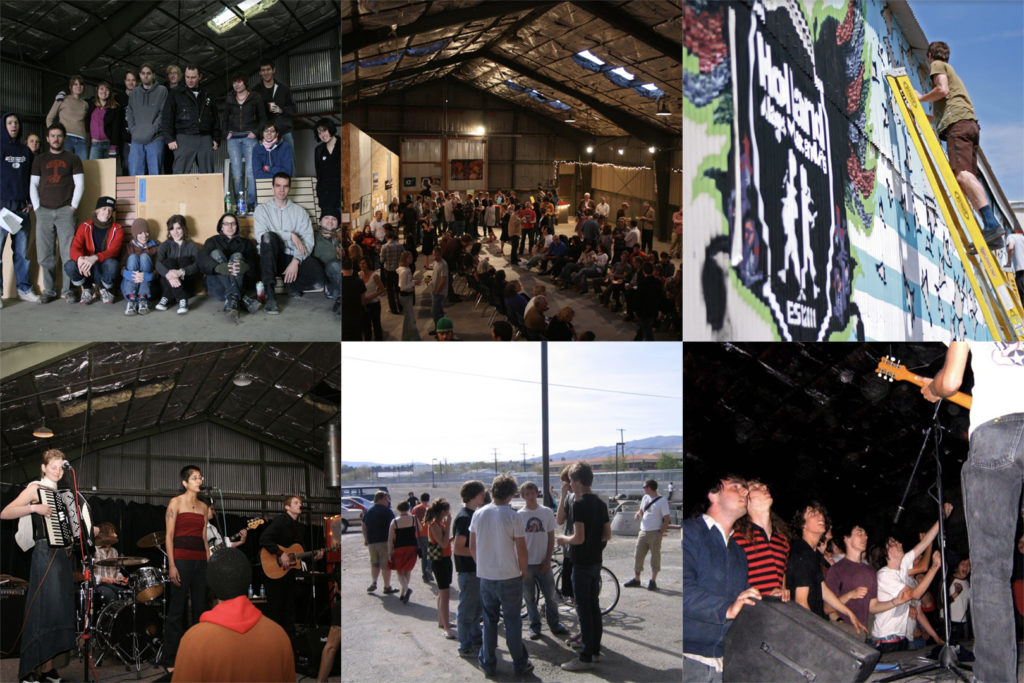
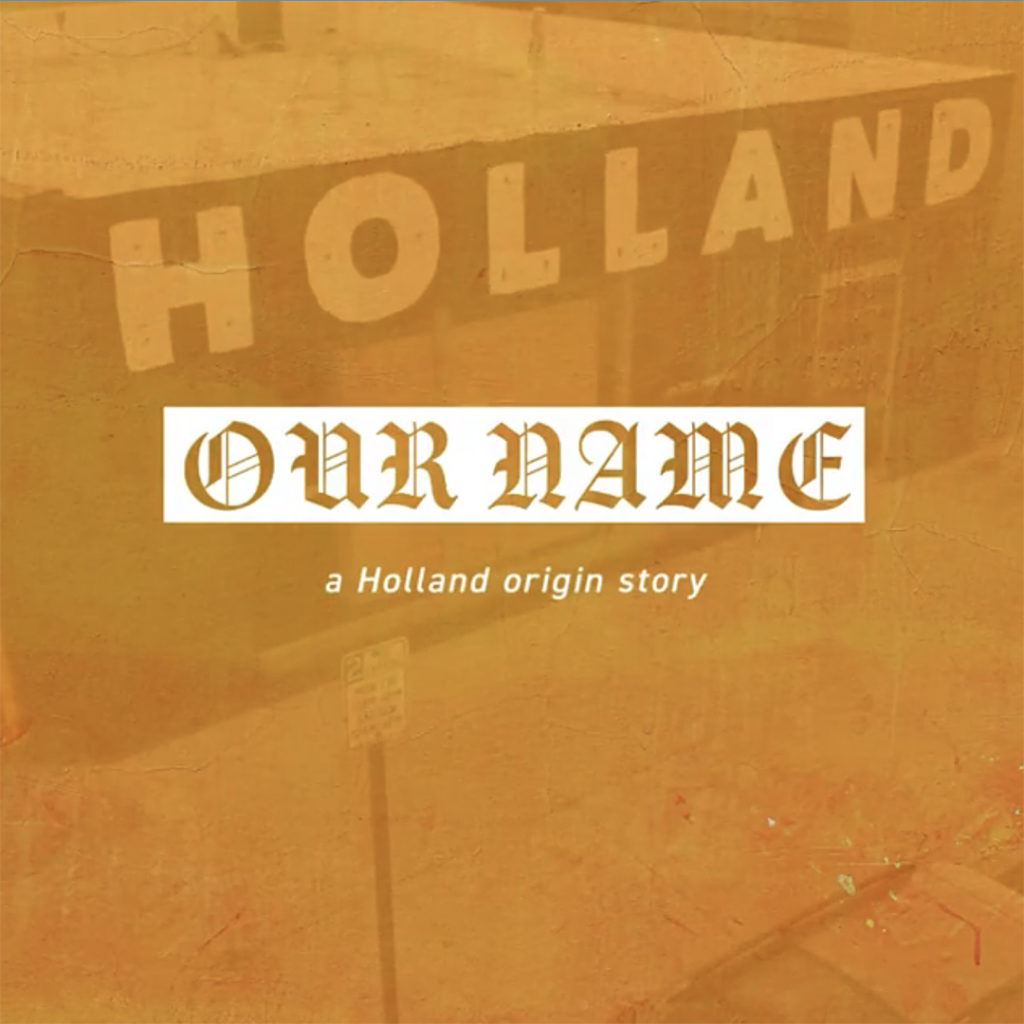
THE NAME. The source of some the most longstanding misconceptions and confusions out there! Peep the slide below for what HP is NOT named after (there are others floating around, but those are the most consistent rumors.)
The real deal is Holland is named in homage to two really incredible all-ages projects – one in Groningen, Holland called VERA (named after a Latin etching – Veri Et Recti Amici – above the door in the medieval basement of their venue – from when the space was used as a fraternity for reformed and progressive students in the 1800s!). Vera in Groningen was founded in the 70s and one of the very first all-ages clubs based in DIY/independent organizing and ethics and has an incredible music history – and is still a cultural powerhouse today! The other – The Vera Project in Seattle – which was modeled after the original Vera and started in 2001 as a response to a draconian ordinance called the Teen Dance Ordinance, which effectively prohibited young people from gathering for shows, events, music or dancing of any kind. In addition to the venue, it houses a gallery, silkscreen studio, recording studio and more.
In the beginning stages of Holland, we called it “Vera Reno” for a long time – until we all tossed some names on a list and voted at one of our very first collective meetings. We recommend googling some history on both Veras – it’s fascinating stuff and a reason we’re super proud to pay tribute to both these rad orgs in our name!
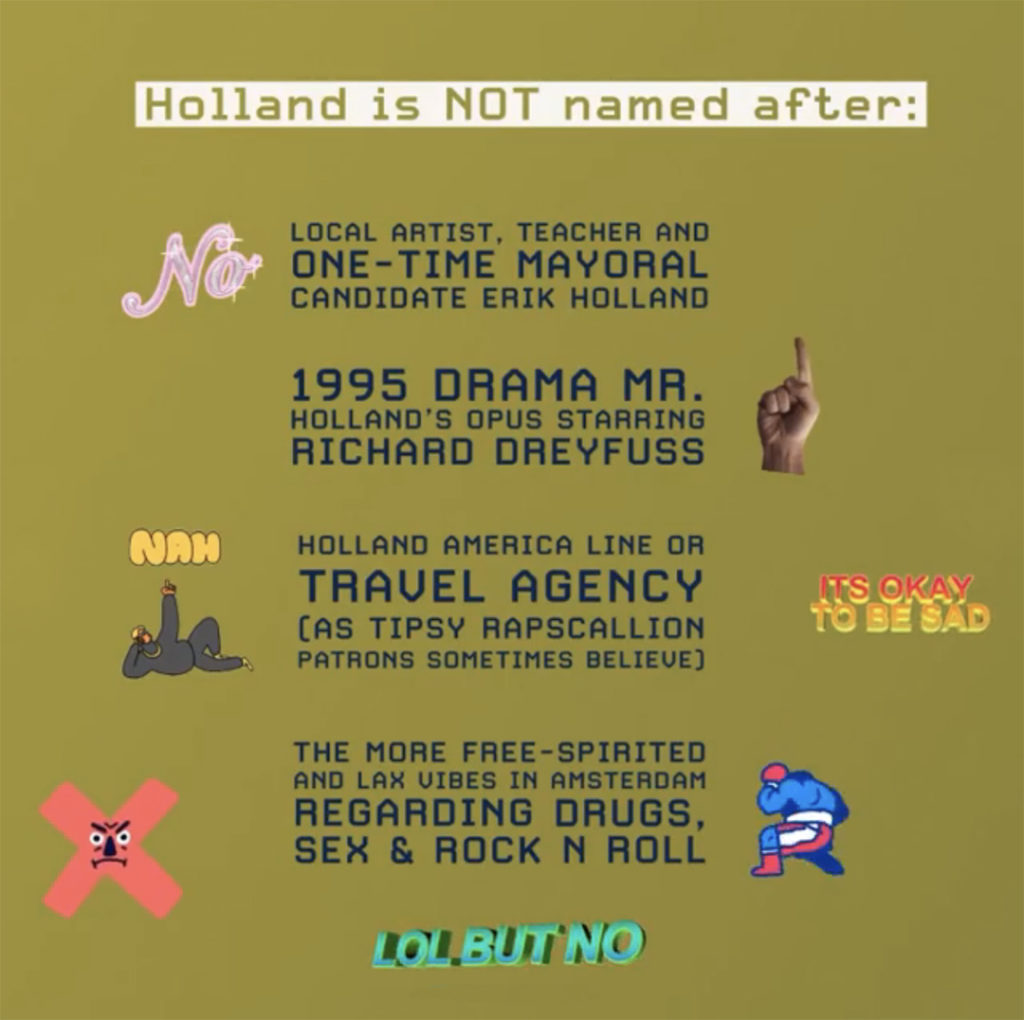
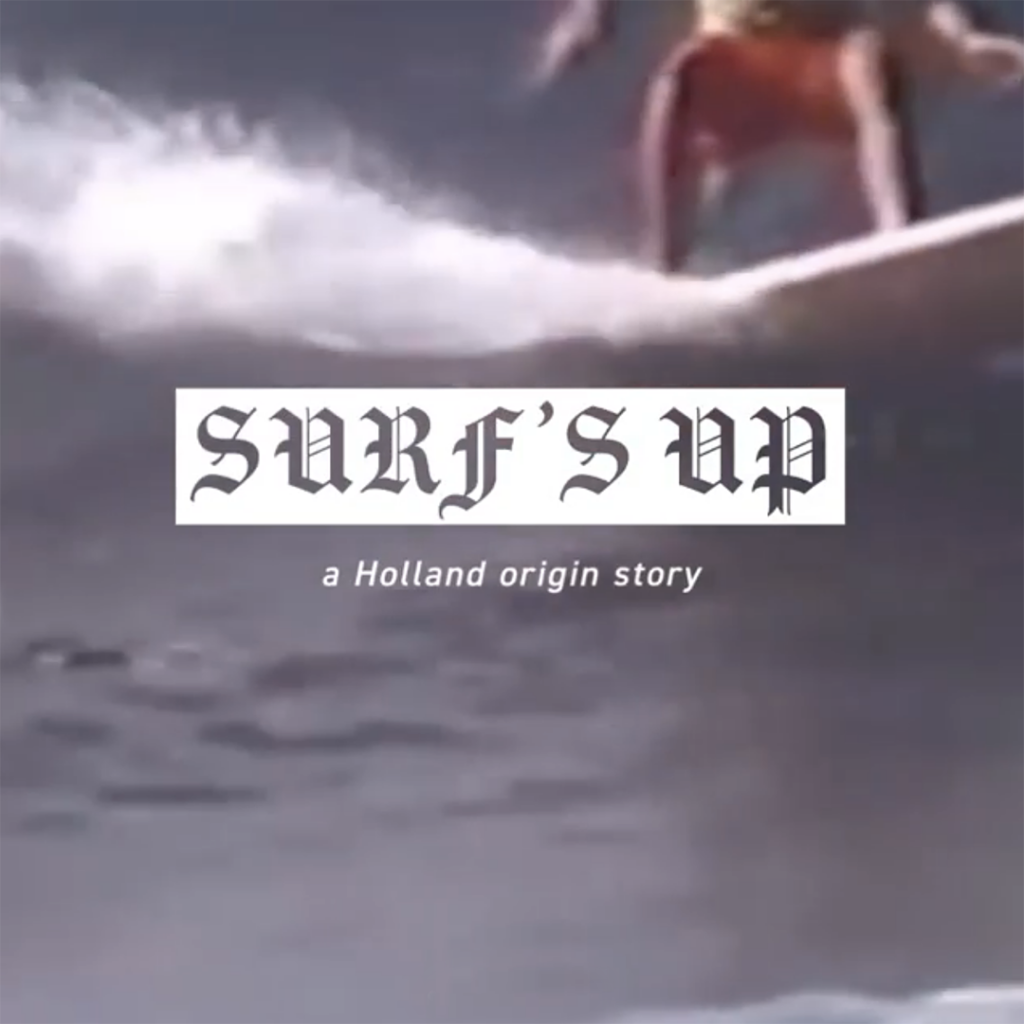
SURF’S UP! In 2020, we’ve asked a bunch of friends to contribute to Holland’s Surf’s Up program for KWNK 97.7FM – we thought we’d shine a light in why the heck “Surf’s Up!” became a Holland motto.
In early Holland days, we picked up two rubber stamps to use at the door to mark wrists of people who paid. Neither were cool (the other was a cat!), but Julian (longtime Holland doorman and wrangler, aka Chairman of the Chairs) took a shine to the Surf’s Up stamp and used it most often for years….so it became synonymous with Holland shows. We lost the original stamp at Forage (our big summer shindig) when we took it to Idewild pool for the rock-n-roll pool party. Kristin (then venue manager/queen) recreated it on the DL when she was working at Kinkos and moonlighting at Holland.
So Surf’s Up ink on people’s wrists continued. We’ve had two other versions since the original. In 2017, we asked Casey Conrad and Em Jiang to create Surfs Up artwork as the rallying motto for Holland’s 10th Birthday.
And when KWNK launched, Surf’s Up became the title for Holland’s signature program! 🏄🏽♂️🏄🏽♂️🏄🏽♂️ PS, it’s the code word you text to 44-321 to become a Holland member. Long live that first ugly stamp, that has become such a key part of our lives and our story. 🌊💙Surf’s Up forever! 💙🌊
